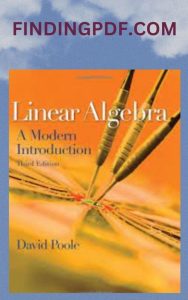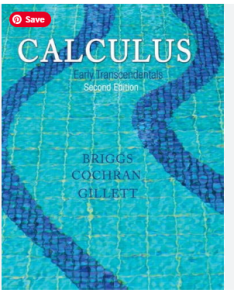
“Elementary Eifferential Equations Boyce 11th Edition” PDF Free Download
Books Title: “Elementary Eifferential Equations Boyce 11th Edition” PDF Free Download

“Elementary Eifferential Equations Boyce 11th Edition” is an interesting book for Mathematicians. It is revolved around various equations, problem solving methods and different practical examples. This book was originally published in 1965 by “John Wiley & Sons, Inc.”. By genre it belongs to the category of Science & Engineering Mathematics Textbook.
Books Author: “William E. Boyce”

“William E. Boyce” was born in Born: 1930. He recieved his Ph.D. degrees in Mathematics from Carnegie-Mellon University. He is also a member of the American Mathematical Society. His most popular and prominent books are “Elementary Differential Equations”, “Differential Equations with Boundary Value Problems” and “Elementary Differential Equations and Boundary Value”. He was died in 2019.
Introduction to “Elementary Eifferential Equations Boyce 11th Edition”
“Elementary Eifferential Equations Boyce 11th Edition” is for aspiring mathematicians. It has several editions, this one like others deals with equations which have an equals sign. Mathematicians have a keen interest in elementary equations. Elementary differential equations and boundary problems is a widely accepted book dealing with the elementary equations. Applied mathematicians benefit a lot from it. It has all of the theoretical information on the equations. Apart from this many of the practical aspect is also covered. It has a thorough coverage of the information related to elementary equations.
It deals with different methods to solve the question. Every method is well defined with accuracy. It also gives a critical analysis of the answers. Different approaches to solutions give a good understanding on the subject. It also covers the daily life application of all the theories mentioned in the book. In the eleventh edition some clear modifications have been made for a better coverage of concepts.
Summary of “Elementary Eifferential Equations Boyce 11th Edition”
The first chapter in the book is on the introduction of the concept of differential equations. This chapter aims at providing a detailed overview to the readers. The clear concept of these equations makes it easy to deal with them. They are used in various fields. Like in engineering the differential equations are a significant part of the field. Science has also given importance to the equations. This chapter gives us a ground to build up on further concepts. The division of these equations are further explained in the chapters forward. Some questions are given and solutions are explained to grasp the knowledge easily.
The first type of differential equation is first-order equations. In the chapter of first-order equations, authors gave detailed information. It starts off with a statement and formula for these types of questions. This formula is basically the definition of first-order equation. Further division of these equations is into linear, exact and separable equations. Each type has a separate subtopic on it. Different examples are given with solutions to each. Graphs are drawn to show direction fields and integral curves. Each step in the solution is written down to clarify it further. Problems are given in the end for practice and application of the equations correctly.
Moving on to the chapter of second-order linear differential equations. It is further divided into homogeneous and heterogeneous equations. Different examples are given along with solutions. More examples on frequency and vibration of waves are given. For a practical understanding graphs are drawn to visualize the answers. The formula is given great focus in the chapter. The constant value or coefficients are focused for solving the problems.
The high order linear equations have a separate topic on them. Different concepts are introduced in this topic. One of the concepts is linear independence. It has been included in this edition to give new possibilities to solve questions. Questions are solved using different techniques and approaches. The steps are discussed in detail.
Laplace transform is a concept explained in the book. An introduction to the concept is given to then take the information forward. It is widely used for the solution of linear differential equations. It has some constants and formulas to make the solution accurate and easy. The book gives information on this technique and its usage. Time and frequency has a great role in Laplace Transform. Another approach to solve these types of equations is series solutions. Power series are introduced into the equations and afterwards they are substituted once the differentiation is done.
Furthermore the systems of both homogenous and heterogeneous equations of first-orders are explained. The systems are basically different linear equations which have the same variable. They have to be aligned so that solutions can come out of them. It is just like different lines on a graph which intersect at the point which is basically the solution. The numerical method is used as a solution for the equations. This approach is discussed with various examples. Different types of numerical methods are used.
Apart from these nonlinear equations are discussed in a separate chapter too. First a brief overview on these types of equations is given. It will be enough to differentiate between linear and nonlinear equations. The analysis on the stability of the equation is given. Different methods used for the solution of these equations are mentioned with detail. Lastly, partial differential equations are also a part of this book. Information on the structure of these equations is given. The incorporation of partial differential equations in different fields is explained in this part. It ends with their application in engineering and science.
Writing Style
“William E. Boyce” ways of writing in his book “Elementary Eifferential Equations Boyce 11th Edition” is very easy to approach and understand. He defines the broad aspects of this book including theoretical information’s, elementary equations, formulas for solving questions and practical examples in a comprehensible manner that can attract and pursue a huge numbers of readers worldwide. He used simple and precise language in order to balance the pace and tone of this book. He elaborated the key ideas and core messages of this book in a concise ways with the aims to boost the interest and understanding levels of audiences. “William E. Boyce” used to avoid all sort of extra and irrelevant idioms and difficult vocabularies throughout the story. He placed plot, storylines, themes and opening and closing points in a very professional way along with he included many of practical and real examples for the sake of giving in-depth knowledge.
Major Receptions
“Elementary Eifferential Equations Boyce 11th Edition” has received generally positive reviews since its publications. This book was praise for its comprehensiveness, accuracy and clarity. A lot of students and other professionals also praised this book for its valuable resources, clear explanation and comprehensive coverage. It has been translated in to many of different languages worldwide and it also has been sold millions of copies since its publication.
Conclusion of “Elementary Eifferential Equations Boyce 11th Edition”
Applied mathematicians are the people who deal with both theoretical and practical aspects of differential equations. They rather find an approach which has both of the components. This book on differential equations is what an aspiring student of math needs. It is also beneficial for engineers and people pursuing science as their field of interest. A thorough understanding of differential equations is really important for their solution and application. The language used in the book is easily comprehensible to students of undergraduate level. Various examples and practice questions help them grasp the concepts. These practice exercises are very beneficial for remembering the techniques used for solutions.



